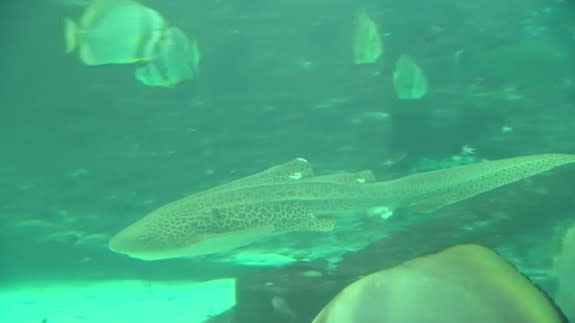Leonie the shark doesn't need a man, begins impregnating herself instead

Parthenogenesis — a natural form of asexual reproduction — is something that's common amongst plant species, insects, amphibians and many other life forms.
Meaning "virgin creation" in Greek, it describes the development and growth of an embryo without fertilisation.
The phenomenon occurs in sharks too, but one shark has shown a remarkable ability to switch between reproduction styles.
SEE ALSO: Twitter is freaking out about the existence of hairless animals
Leonie the leopard shark (also known as a zebra shark) from Reef HQ aquarium in Townsville, Australia, has stunned researchers by becoming the first of her species with a recorded mating history to switch to asexual reproduction.

Image: university of queensland/reuters
It's a breakthrough that has been documented by Dr Christine Dudgeon of the University of Queensland and published in the journal, Scientific Reports.
Leonie last gave birth to pups in 2013, after she had mated with a male. She was then separated from the male, but three years later (in April 2016) she hatched three eggs — despite having no access to a male partner.
"We thought she could be storing sperm but when we tested the pups and the possible parent sharks using DNA fingerprinting, we found they only had cells from Leonie," Dudgeon explained in a statement online.
It turns out Leonie had adapted to her lack of male company. That's especially significant considering the leopard shark was recently listed as "endangered" by the IUCN.
"This has big implications for conservation and shows us how flexible the shark's reproductive system really is," Dudgeon said.
"Leonie adapted to her circumstances and we believe she switched because she lost her mate. What we want to know now is could this occur in the wild and, if so, how often does it?
"One reason why we haven’t seen it before could be because we haven't been looking for it. It might be happening in the wild but it's never been recorded in this species before."
Time will tell if the pups can also reproduce themselves, but there's a strong downside to asexual reproduction too; reduced genetic diversity over successive generations.
Still. Pretty impressive.
